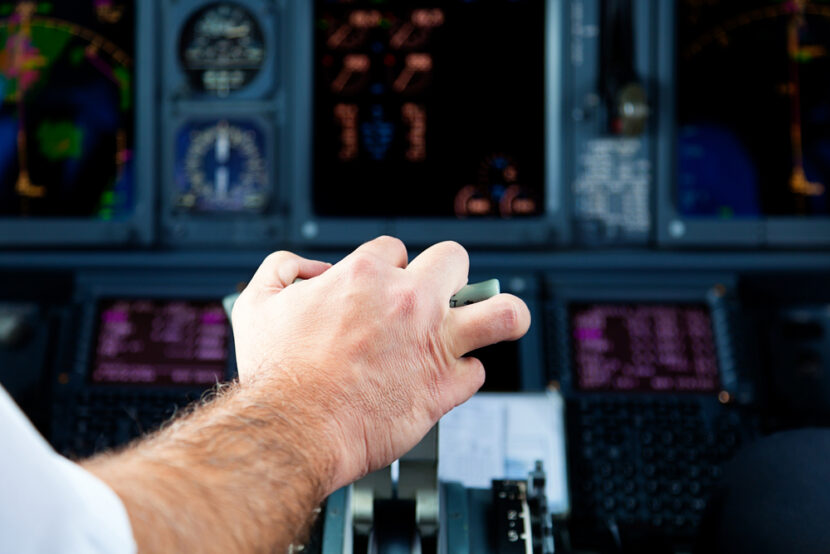SYRACUSE, N.Y. — An American Airlines pilot became gravely ill while flying from Phoenix to Boston and later died, but his first officer calmly took over and safely landed the plane in Syracuse, airline officials said.
One hundred forty seven passengers were onboard when Capt. Michael Johnston, 57, was stricken. Doug Parker, chairman and chief executive officer of American Airlines Group, said in a statement that Johnston “passed away while at work.”
American Flight 550 left Phoenix at 11:55 p.m. local time Sunday and was diverted mid-flight, landing shortly after 7 a.m. EDT on Monday, spokeswoman Andrea Huguely said. After the captain became ill, the first officer took over.
“American 550. Medical emergency. Captain is incapacitated,” the first officer told the Syracuse airport tower, requesting a runway to land.
In a recording of his exchange with the tower, he expressed concern over whether ambulance medics could get on the plane quickly. He was assured they could and told to go into a gate where the medics would meet the plane.
Passengers on the flight were told the pilot was sick and it was making an emergency landing in Syracuse. They later learned of his death.
A replacement crew was sent to Syracuse, and the plane, an Airbus A320, landed in Boston at 12:30 p.m.
Parker said the crew “took extraordinary care of Mike, each other and our customers” during the flight.
“We couldn’t be more proud of the teamwork this crew showed during an extremely difficult time,” he said. “Our airport teams in Syracuse and Boston were also instrumental in assisting our customers, and their handling is also greatly appreciated.”
Johnston was a graduate of Brigham Young University. He began his career with America West Airlines in 1990 as a first officer and later was upgraded to captain. He was married and is survived by a wife and children.
The Federal Aviation Administration said seven pilots for U.S. airlines and one charter pilot have died during flights since 1994.
Aviation experts said there was never any danger to passengers because pilots and co-pilots are equally capable of flying.
Ex-airline pilot John Cox, an aviation safety consultant, said when one pilot becomes unable to fly the other will rely on help from the plane’s automated systems and get priority treatment from air traffic controllers.
“The passengers were not in danger, absolutely not,” he said.
Passenger Louise Anderson, heading from Reno, Nevada, to Boston via Phoenix, said she had dozed off on the flight.
“What I woke up to was the flight attendant telling us we were making an emergency landing because the pilot was ill,” she said.
She said rumours of the pilot’s death circulated in the Syracuse airport but were confirmed only by an announcement on their makeup flight to Boston.
Anderson said the mood on board then was sombre, but she commended the crew’s handling of a tragic situation.
Airline pilots must pass physical exams every 12 months, every six months for captains 40 or older.
Captains and co-pilots usually take turns flying and doing takeoffs and landings, said former airline pilot James Record, who teaches aviation at Dowling College in Oakdale.
“The advantage to that is the co-pilot gets an equal amount of experience and the captain gets to see how the other guy flies,” he said.
Record noted the co-pilot remained calm while describing the emergency and requesting permission from air traffic controllers to land.
“He was doing what he’s trained to do — fly the plane,” Record said. “He was probably more concerned with the health of his buddy, his crew member,” than his ability to fly.
Modern airliners are capable of largely flying themselves. There’s debate in aviation circles about whether over-reliance on automation is eroding pilots’ flying skills. Incidents like Monday’s help ensure regulators won’t allow unmanned cockpits or unaccompanied pilots anytime soon.


